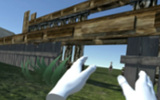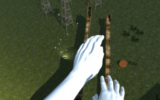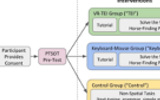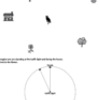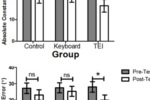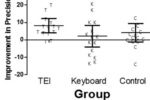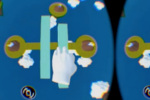TASC for Spatial Perspective Taking Ability
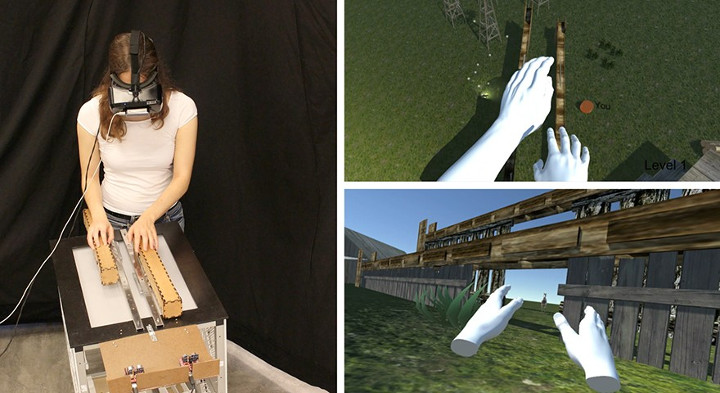
From large-scale and longitudinal studies (particularly, hundreds of thousands of participants tracked for several decades), spatial ability has been shown to be a strong predictor for STEM learning and career success. Spatial sense-making and manipulation are also important to post-WIMP (widows, icons, menus, and pointers) interaction design.
However, many existing spatial ability learning and testing materials, albeit well-tested by cognitive scientists and broadly-used by educators, have certain limitations. They do not afford good 3D perception, are not appealing to the students, and often engage only very little of the body which is not how humans use and develop spatial ability.
Grounded in embodied cognition theories, this TASC system (Tangibles for Augmenting Spatial Cognition) uses tangible interaction and virtual reality (VR) to engage and improve spatial perspective taking ability.
Other Info:
However, many existing spatial ability learning and testing materials, albeit well-tested by cognitive scientists and broadly-used by educators, have certain limitations. They do not afford good 3D perception, are not appealing to the students, and often engage only very little of the body which is not how humans use and develop spatial ability.
Grounded in embodied cognition theories, this TASC system (Tangibles for Augmenting Spatial Cognition) uses tangible interaction and virtual reality (VR) to engage and improve spatial perspective taking ability.
Other Info:
- Funding Agency: SSHRC
Conference Proceedings
- Jack Shen-Kuen Chang, Georgina Yeboah, Alison Doucette, Paul Clifton, Michael Nitsche, Timothy Welsh, and Ali Mazalek. "Evaluating the effect of tangible virtual reality on spatial perspective taking ability." In Proceedings of the 5th Symposium on Spatial User Interaction (SUI '17), pp. 68-77. ACM, 2017. [pdf] / [pub]
- Jack Shen-Kuen Chang, Georgina Yeboah, Alison Doucette, Paul Clifton, Michael Nitsche, Timothy Welsh, and Ali Mazalek. "TASC: Combining Virtual Reality with Tangible and Embodied Interactions to Support Spatial Cognition." In Proceedings of the 2017 Conference on Designing Interactive Systems (DIS '17), pp. 1239-1251. ACM, 2017. [pdf] / [pub]
- Jack Shen-Kuen Chang. "Tangible and Virtual Interactions for Supporting Spatial Cognition." In Proceedings of the 2017 ACM Conference Companion Publication on Designing Interactive Systems (DIS '17 Companion), pp. 382-383. ACM, 2017. [pdf] / [pub]
- Jack Shen-Kuen Chang. "The Design and Evaluation of Embodied Interfaces for Supporting Spatial Ability." In Proceedings of the Tenth International Conference on Tangible, Embedded, and Embodied Interaction (TEI '17), pp. 681-684. ACM, 2017. [pdf] / [pub]
Journal Papers
-
Featured Story 3, Issue 24 (2016 Nov/Dec), INNOVATION
(Ryerson University's research and innovation newsletter)
This kind of training allows the users to engage in the 3D world with their bodies, creating a new method of tackling spatial challenges. “Most spatial training materials are surface- or paper-based,” said Jack (Shen-Kuen) Chang, Mazalek’s PhD student and project lead, who is working on his dissertation in this area. “We are putting the ‘space’ back into spatial abilities.”
(in alphabetical order)
- Paul Clifton
- Alison Doucette
- Prof. Ali Mazalek
- Prof. Michael Nitsche
- Prof. Timothy Welsh
- Georgina Yeboah


